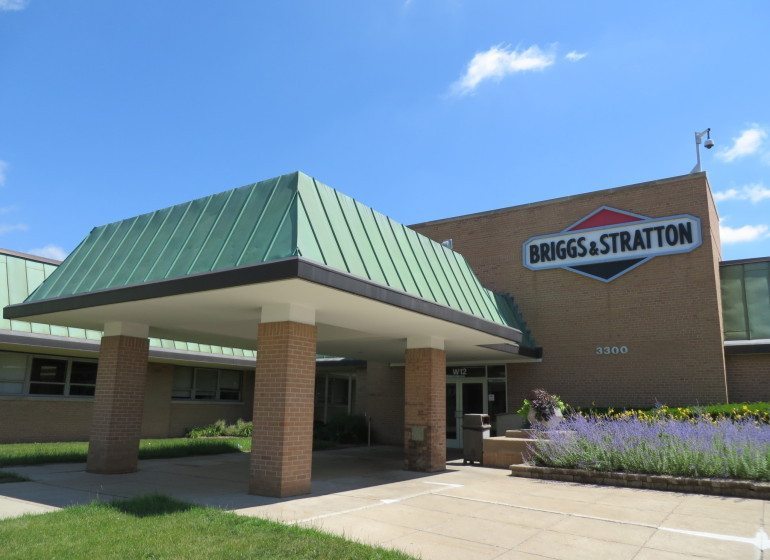After introducing its Vanguard commercial battery system last fall, Wauwatosa-based Briggs & Stratton Corp. expects the new product line to generate $30 million in revenue in its next fiscal year and potentially 10% of sales by fiscal 2023.
As Briggs works to refocus its portfolio, the 2023 target would represent more than $100 million in battery revenue for
a company historically known for making internal combustion engines.
“There’s no doubt we’ll be a different company from where we’ve been over the last two decades. However, in a sense, we’ll be embracing our roots as a focused power application company,” Todd Teske, chairman, president and chief executive officer of Briggs & Stratton, said during a call with analysts Friday.
In addition to the battery strategy, Briggs & Stratton
announced a plan on Friday to refocus the company on growing its commercial engine and standby power businesses while improving the profitability of its traditional residential engine line. In the process, Briggs will exit most of its products business and is actively looking to sell its U.S.-based turf care business and power washer and portable generator lines.
The commercial engine, standby power and residential plans all seem like natural shifts within Briggs’ traditional business, but executives said the battery strategy is also an extension of the company’s expertise.
“We understand the parameters, characteristics and algorithms around the most efficient use of power in a piece of equipment with the best user experience,” Teske said.
Teske pointed to applications like cutting grass, in which understanding how much power is needed from a lawnmower engine requires understanding how different types of terrain and turf will alter the equipment’s performance.
“We understand these types of variables and are the best in the world at solving for these variables in the power range in which we play,” he said.
Briggs says there is a $12 billion addressable market for batteries to be used in commercial turf, government and municipal vehicles, construction and outdoor power equipment with adoption of the technology varying by segment.
The company also believes it is uniquely positioned to serve those markets, arguing that large battery cell manufacturers and other battery pack providers lack the application knowledge to compete. New entrants don’t have the customer relationships that Briggs has built up over time and OEM customers lack the scale internally to develop their own products.
The product itself is a lithium ion battery with configurations that span from 1kWh to 40kWh. Jeff Zeiler, vice president of innovation at Briggs, said the company has incorporated a modular design to the battery pack that allows it to be customized and fine-tuned for specific customer applications.
“Our strategic focus from the beginning has been on making a battery system that can be applied across many industries and applications,” Zeiler said, noting that battery packs for power tools and walk behind mowers are too small for the applications Briggs is targeting while batteries used in electric automobiles are too big.
Briggs has been investing in the development of the battery technology over the last several years. As a result, Teske said the new strategy doesn’t require significant additional investment in research and development going forward. Instead, the battery line should be a boost to the margins of Briggs’ remaining engine business.
Investing in manufacturing capacity for the battery business is also less expensive. Teske said a traditional internal combustion engine plant would be 250,000 to 300,000 square feet and require upwards of an $80 million capital investment.
The battery plant in Tucker, Georgia that Briggs
announced last week is 78,000 square feet and will require less than $10 million in capital expenditures.
“Ultimately, as we scale the business, we will need to make incremental investments, but again, those investments are substantially smaller than we would have traditionally done,” Teske said.
He added that Briggs likely won’t have large facilities for the business, in part because transportation costs for the battery packs can be expensive.
“What we’ll do is have the opportunity to have more distributed plants, closer to the center of where these applications would be produced, which then further drives down costs,” Teske said.
In addition to applications like commercial turf and municipal vehicles, Teske also says Briggs’ battery technology will benefit the company’s standby power generator business. He said the 1 to 40kWh power capabilities of the battery system would be “a sweet spot for homeowners.”
“We don’t have a product in the market today simply because I’m not sure the products that are in the market today are necessarily the solution,” he said. “We could replicate what’s in the market today, but you can expect us in the not so distant future, the very near future, to be out with a battery offering that will be better than what is currently offered in the market.”
